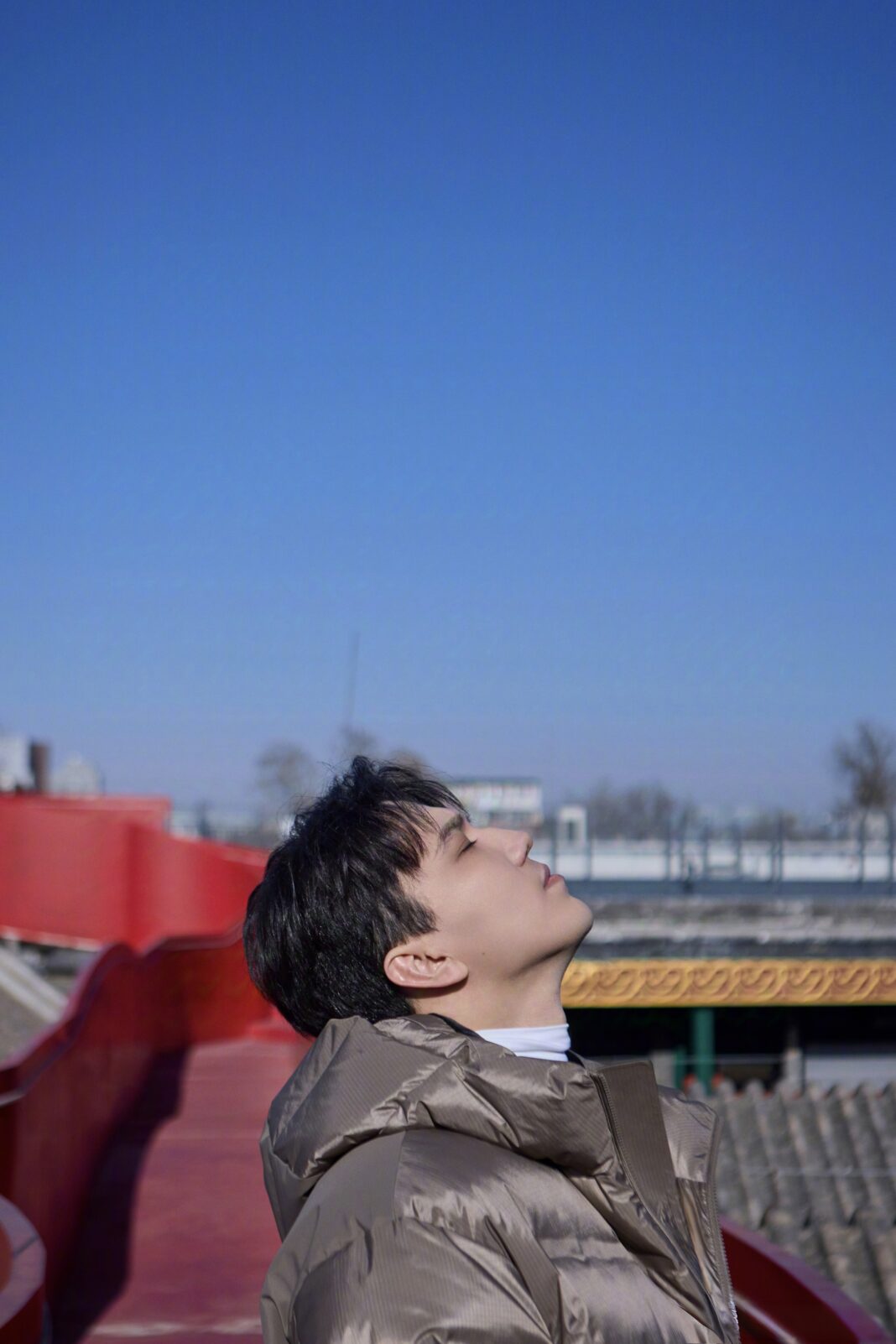On December 29, 30 as part of the BRTV project “最美中轴线 Singing for the Central Axis of Beijing,” Dimash Qudaibergen visited the Temple of Earth in Beijing.
 The Central Axis of Beijing is the largest and most iconic urban planning design currently in China. It stretches through the historical part of Beijing from south to north, beginning at the Bell and Drum Towers, passing Wan Ning Bridge, Jingshan Park, and the Forbidden City Museum, and ending at Yongdingmen Gate. Rooted in the Yuan Dynasty (1267), the Central Axis has stood for over 700 years, spanning approximately 7.8 kilometers.
The Central Axis of Beijing is the largest and most iconic urban planning design currently in China. It stretches through the historical part of Beijing from south to north, beginning at the Bell and Drum Towers, passing Wan Ning Bridge, Jingshan Park, and the Forbidden City Museum, and ending at Yongdingmen Gate. Rooted in the Yuan Dynasty (1267), the Central Axis has stood for over 700 years, spanning approximately 7.8 kilometers.
 The Temple of Earth, along with the Temple of Heaven and the Forbidden City, lies along Beijing’s Central Axis, symbolizing the Three Great Elements, Earth, Heaven, and Humanity, in harmony and unity.
The Temple of Earth, along with the Temple of Heaven and the Forbidden City, lies along Beijing’s Central Axis, symbolizing the Three Great Elements, Earth, Heaven, and Humanity, in harmony and unity.
Originally, the Altar of Earth and the Altar of Heaven were part of the same complex, but they were separated in 1530. The Temple of Heaven remained in its original location, while the Temple of Earth was relocated north of the Forbidden City. Besides the Altar of Earth, the Temple of Earth houses the Residence of the Spirits of Heaven and Earth, a Sacred Granary, the Hall of the Sacred Horse, a Bell Tower, and other structures. In the northeastern section, there is a modern park dedicated to traditional Chinese medicine and wellness culture.
 At the Temple of Earth, Dimash was joined by Chinese singer Gong Linna, with whom he previously performed the song “成为诗人 Become a Poet” on the show Our Song (我们的歌).
At the Temple of Earth, Dimash was joined by Chinese singer Gong Linna, with whom he previously performed the song “成为诗人 Become a Poet” on the show Our Song (我们的歌).
 During their tour of the park, the musicians explored landmarks, sampled treats from the local market, visited exhibitions showcasing products from various countries, and participated in discussions about culture and creativity.
During their tour of the park, the musicians explored landmarks, sampled treats from the local market, visited exhibitions showcasing products from various countries, and participated in discussions about culture and creativity.
 In the course of their conversation, Dimash and Gong Linna exchanged gifts. Dimash presented Gong Linna with a dombyra and shared the instrument’s history:
In the course of their conversation, Dimash and Gong Linna exchanged gifts. Dimash presented Gong Linna with a dombyra and shared the instrument’s history:
“In the past, the dombra had many more strings. According to legend, a khan once lost his son. None of his subjects dared deliver the tragic news of his death. The message was conveyed through the dombra. Why, you ask? At the time, the khan had said, ‘I cannot find my son, and whoever brings me sad news, I will fill their throat with molten lead.’ Thus, the dombra saved someone’s life.”
 As the New Year approached, Dimash and Gong Linna performed a traditional duet featuring the song “Jasmin” Dimash played the dombra while Gong Linna sang. At the hosts’ request, Dimash also sang a segment of “Karatorgai” in his native Kazakh.
As the New Year approached, Dimash and Gong Linna performed a traditional duet featuring the song “Jasmin” Dimash played the dombra while Gong Linna sang. At the hosts’ request, Dimash also sang a segment of “Karatorgai” in his native Kazakh.
 Following the tour, Dimash and Gong Linna headed to a rehearsal, where they received a unique lesson in playing large Chinese drums. Dimash, naturally, took the opportunity to improvise on the ancient instrument. He also supported Gong Linna as she practiced singing the Kazakh lyrics of “Karatorgai.”
Following the tour, Dimash and Gong Linna headed to a rehearsal, where they received a unique lesson in playing large Chinese drums. Dimash, naturally, took the opportunity to improvise on the ancient instrument. He also supported Gong Linna as she practiced singing the Kazakh lyrics of “Karatorgai.”
 As part of their continued exploration of Beijing’s landmarks, Dimash and Gong Linna visited the Zheng-Yi Temple Theatre.
As part of their continued exploration of Beijing’s landmarks, Dimash and Gong Linna visited the Zheng-Yi Temple Theatre.
Built on the site of a Buddhist temple in 1688 during the Kangxi Emperor’s reign in the Qing Dynasty, the Zheng-Yi Temple Theatre is one of the “Four Great Opera Theatres” of Beijing.
Today, the theatre continues to host Peking Opera performances and is considered a living relic and one of the most significant cultural monuments in the Chinese capital.



